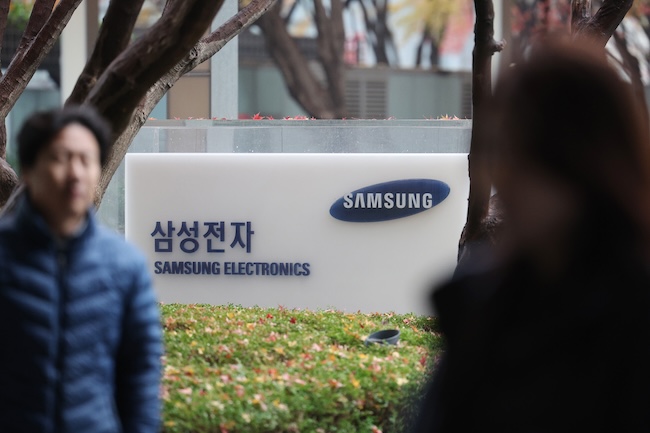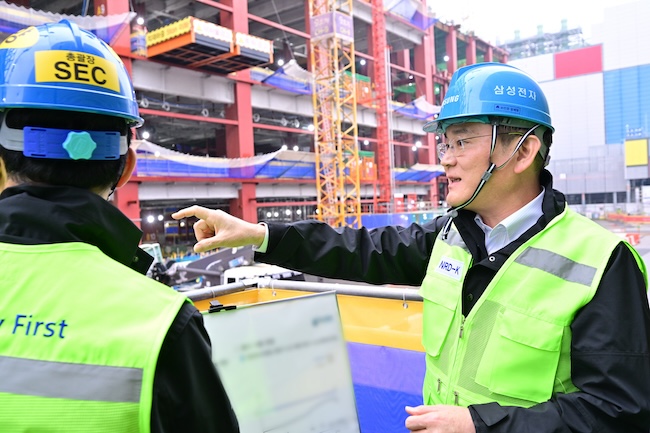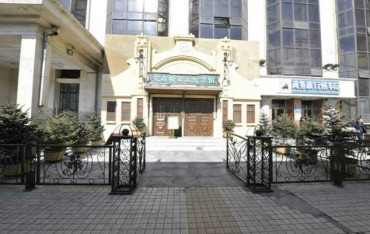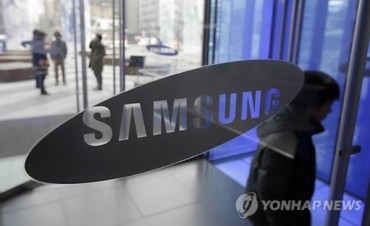
Samsung Electronics recently announced a significant organizational restructure, including the establishment of a new Business Development Group within its Digital Experience (DX) division. (Image courtesy of Yonhap)
SEOUL, Dec. 12 (Korea Bizwire) – In a strategic move to bolster its efforts to uncover groundbreaking technology and business opportunities, Samsung Electronics recently announced a significant organizational restructure, including the establishment of a new Business Development Group within its Digital Experience (DX) division.
The newly formed Business Development Group will serve as a central hub for spearheading the exploration of new business opportunities in the DX sector. Vice Chairman Baek Jong-su will lead this group, assuming the role of both Business Development Group Leader and Head of the New Business Task Force.
Furthermore, within the DX division, three separate business units have introduced corresponding business development organizations: Mobile Experience (MX), Video Display (VD), and Domestic Appliances (DA). This move comes in response to challenging market conditions, including a prolonged economic downturn and declining demand for various product lines, except for select premium offerings like foldable phones.
Samsung’s goal with this organizational shift is to address immediate challenges while also focusing on identifying long-term revenue-generating opportunities. The company aims to achieve this by embracing a proactive approach to business discovery.
The Business Development Group will collaborate closely with existing Future Technology Office and the newly announced Future Business Planning Team to ensure effective communication and synergy among these critical units.
Earlier this year, Samsung Electronics established the Future Business Planning Team as part of its year-end personnel changes, entrusting its leadership to Chairman Jun Young-hyun, who has played a pivotal role in the “Semiconductor Renaissance.” Notably, the team welcomed experienced individuals such as Vice President Jung Sung-taek and semiconductor specialist Lee Won-young.
The Future Business Planning Team’s primary responsibility is to identify future-oriented ventures over the next decade. While the team will primarily focus on electronics and affiliated sectors, it seeks to explore business avenues that extend beyond Samsung’s existing operations.

The anticipation is high for Samsung to once again introduce groundbreaking, “Lee Jae-yong-style” ventures that can surpass even those previous successes. (Image courtesy of Samsung Electronics)
The ultimate objective of these initiatives is to secure Samsung’s future in the evolving technological landscape and pave the way for a paradigm shift in the next decade.
In August, Samsung also established the Future Technology Office within the DX division to secure future technologies and products. Kim Kang-tae, Vice President of Samsung Research’s Technology Strategy Team, leads this office.
These developments underscore Samsung’s commitment to staying ahead in the competitive landscape, as emerging technologies like artificial intelligence (AI), robotics, and biotechnology become increasingly crowded fields.
This endeavor to discover new business opportunities bears similarities to the “New Business Pursuit Team,” established in 2009 under the guidance of the late Chairman Lee Kun-hee. That initiative led to the discovery of five major new businesses, including solar power, light-emitting diodes (LEDs), secondary batteries, medical devices, and biopharmaceuticals, with secondary batteries and biopharmaceuticals emerging as core ventures.
With this track record in mind, the anticipation is high for Samsung to once again introduce groundbreaking, “Lee Jae-yong-style” ventures that can surpass even those previous successes.
Chairman Lee Jae-yong has consistently emphasized the significance of technology in sustaining and driving growth, noting, “Survival depends on how quickly we can make future technology ours.”
In line with this vision, Samsung Electronics has increased its research and development investments despite challenging economic conditions. In the first half of this year alone, the company invested 13.8 trillion won in R&D, followed by an additional 7 trillion won in the third quarter. As a result, annual spending on R&D this year is set to surpass the record-breaking 24.9 trillion won from last year.
This year, the company is projected to allocate approximately 53.7 trillion won for capital investments, with 47.5 trillion won directed towards semiconductors (DS) and 3.1 trillion won for display technologies, marking the highest level in company history.
Kevin Lee (kevinlee@koreabizwire.com)






